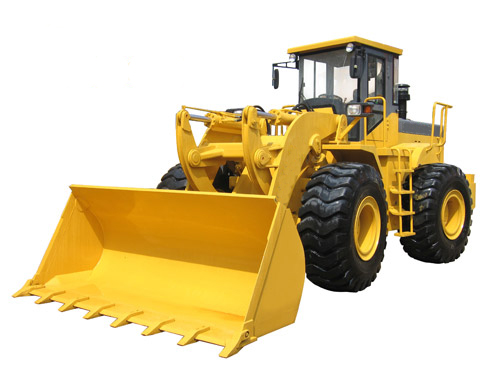A loader is a type of tractor, usually wheeled, sometimes on tracks, that has a front-mounted square wide bucket connected to the end of two booms (arms) to scoop up loose material from the ground, such as dirt, sand or gravel, and move it from one place to another without pushing the material across the ground. A loader is commonly used to move a stockpiled material from ground level and deposit it into an awaiting dump truck or into an open trench excavation.
The loader assembly may be a removable attachment or permanently mounted. Often the bucket can be replaced with other devices or tools—for example, many can mount forks to lift heavy pallets or shipping containers, and a hydraulically opening “clamshell” bucket allows a loader to act as a light dozer or scraper. The bucket can also be augmented with devices like a bale grappler for handling large bales of hay or straw.
Gallery with ID 4 doesn't exist.
Large loaders, such as the Kawasaki 95ZV-2, John Deere 844K, Caterpillar 950H, Volvo L120E, Case 921E, or Hitachi ZW310 usually have only a front bucket and are called Front Loaders, whereas small loader tractors are often also equipped with a small backhoe and are called backhoe loaders or loader backhoes or JCBs, after the company that first claimed to have invented them. Other companies like CASE in America and Whitlock in the UK had been manufacturing Excavator Loaders well before JCB.
The largest loader in the world is LeTourneau L-2350. Currently these large loaders are in production in the Longview, Texas facility. The L-2350 uses a diesel electric propulsion system similar to that used in a locomotive. Each rubber tired wheel is driven by its own independent electric motor.



